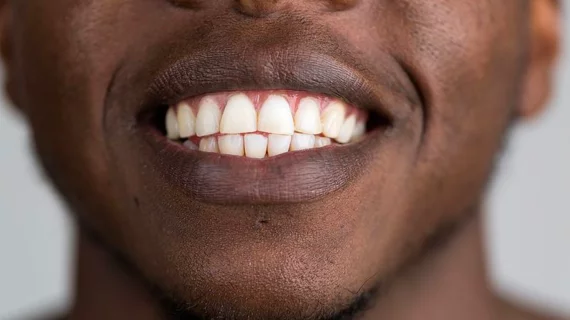Good oral health—in particular a lack of periodontal disease—has been linked to lower systolic blood pressure and a better chance at successful antihypertensive therapy in patients with high BP, according to research published Oct. 22 in Hypertension.
Periodontal disease, known colloquially as gum disease, has been studied before in the context of CVD, first author Davide Pietropaoli and coauthors wrote in the journal. But, while researchers have suggested periodontal therapy might be beneficial for lowering blood pressure, its role in BP control is unknown.
“The established role of systemic inflammation as a major determinant of adverse cardiovascular outcomes has pushed research toward exploring the association of periodontal disease with a variety of cardiovascular conditions,” Pietropaoli, of San Salvatore Hospital in L’Aquila, Italy, and colleagues said. “Thus, many cardiovascular risk factors and related diseases, including endothelial dysfunction, hypertension, atherosclerosis and major cardiovascular events, have been associated with periodontitis.”
For their analysis, Pietropaoli et al. evaluated data from 11,753 treated hypertensive patients enrolled in the NHANES (National Health and Nutrition Examination Survey) database between 2009 and 2014. More than 88 percent of those patients reported taking at least one hypertensive medication at the study’s baseline.
The researchers found that, after participants underwent complete periodontal examination, 47.8 percent were free of periodontal disease. Of the remaining 52.2 percent, 37.8 percent had moderate disease, 11.5 percent had severe disease and 2.9 percent were diagnosed with mild disease.
Pietropaoli and his team didn’t find any differences in glycolipid profiles, creatinine or C-reactive protein levels among the study population, but those with periodontitis were more likely to be older, male, Hispanic and a normal weight. They were also more commonly smokers with low incomes and educations.
In terms of blood pressure, Pietropaoli et al. found the mean systolic BP was around 2.3 to 3 mm Hg higher in treated hypertensive adults with periodontitis compared to those without the disease.
“Low-grade systemic inflammation that is typical of periodontitis might explain this finding because it has been regarded as the mechanism underlying the association of periodontitis with several cardiovascular risk factors and diseases,” the authors wrote.
“However, because a causal relationship cannot be inferred from observational data, future studies should focus on the direction of the reported association and the long-term impact of periodontal therapy on cardiovascular risk factors and outcomes in populations with different racial/ethnic backgrounds.”
Periodontal disease was also associated with a 20 percent increased risk of unsuccessful antihypertensive treatment.
“Taken together, these data suggest that antihypertensive therapy in the presence of periodontitis might not be as effective as in the absence of the disease, with an achieved systolic BP at best equal to, but not lower than, what was observed in the absence of periodontitis,” Pietropaoli and coauthors said. “Moreover, it seems that the severity of periodontal disease affects the odds of treatment failure.”

